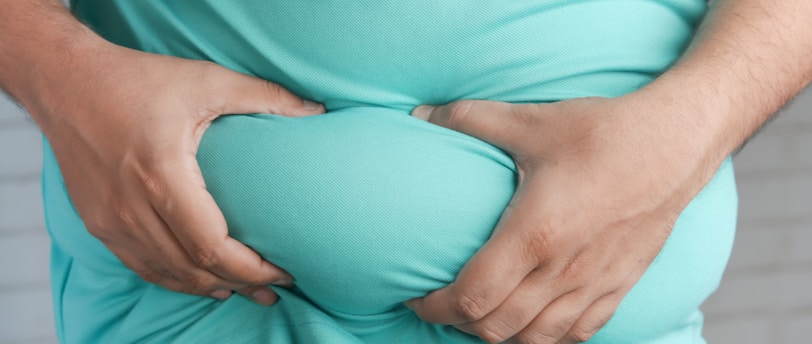Informações sobre saúde para você !
The Ultimate Guide to a Healthy Diet for Weight Loss
Losing weight is a common goal for many people worldwide. However, achieving this goal in a healthy way involves much more than just following fad diets. The key to effective weight loss lies in adopting a healthy, balanced diet that combines proper nutrition with sustainable eating habits. In this ultimate guide, we will explore the best practices for creating a healthy diet for weight loss, explain the essential food groups and their role in weight loss, and provide practical tips to help you get started and stay on track. Additionally, we’ll look at how to optimize nutrient intake for both health and effective weight loss.
WEIGHT LOSS
2/4/20253 min read


What is a Healthy Diet for Weight Loss?
A healthy diet for weight loss isn’t just about eating fewer calories. It's about choosing the right foods that nourish your body, keep you full, and help you shed excess weight in a sustainable manner. This section will define what a healthy weight loss diet looks like, including the importance of macronutrients (proteins, fats, and carbohydrates) and micronutrients (vitamins and minerals), and how to balance them effectively for maximum health benefits.
Key Principles of a Healthy Diet
Caloric Deficit: Understand how consuming fewer calories than you burn is the basis for weight loss.
Macronutrient Balance: How proteins, fats, and carbohydrates play crucial roles in fueling your body while keeping you satisfied.
Micronutrients: The importance of vitamins and minerals in supporting metabolism and overall health.
Hydration: Why drinking enough water is essential for weight loss and metabolism.
Foods to Include in a Healthy Diet for Weight Loss
The foods you choose are just as important as the number of calories you consume. Below are key food categories to focus on for effective weight loss.
Lean Proteins
Proteins are essential for building and repairing muscles and can help you feel fuller for longer periods. Good sources of lean protein include:
Chicken breast
Fish (salmon, tuna, cod)
Plant-based proteins (tofu, lentils, chickpeas)
Eggs
Healthy Fats
Healthy fats help regulate hormones, support brain function, and keep you feeling satisfied. Some examples include:
Avocados
Olive oil
Nuts and seeds
Fatty fish (like salmon and mackerel)
Complex Carbohydrates
Carbs provide energy, but choosing the right kind is crucial. Opt for:
Whole grains (brown rice, quinoa, oats)
Vegetables (sweet potatoes, leafy greens)
Fruits (berries, apples, bananas)
Fiber-Rich Foods
Fiber is key to digestion and helps you feel fuller longer. Include foods like:
Vegetables (broccoli, spinach, carrots)
Fruits (apples, pears, berries)
Whole grains
Legumes (beans, lentils)
Foods to Avoid on a Weight Loss Journey
While it's essential to include healthy foods in your diet, it’s equally important to avoid or limit certain items that can hinder weight loss progress.
Processed foods: Often high in unhealthy fats, sugars, and calories.
Sugary drinks: Soda, energy drinks, and sweetened teas provide empty calories.
Refined carbohydrates: White bread, pastries, and other highly processed carbs can cause blood sugar spikes and crashes.
How to Build a Healthy Meal Plan for Weight Loss
Creating a sustainable meal plan is key to long-term weight loss success. This section will provide a step-by-step guide on how to build your own healthy meal plan.
Set your caloric goal: Determine your daily caloric needs and create a caloric deficit.
Choose nutrient-dense foods: Focus on foods that are rich in nutrients but not excessive in calories.
Meal prepping: The benefits of planning and preparing meals in advance to stay on track.
Portion control: How to avoid overeating by understanding portion sizes.
Common Diet Mistakes to Avoid
Many people make mistakes when trying to lose weight. This section will highlight the most common errors and how to avoid them:
Skipping meals: Why skipping meals can actually slow down your metabolism.
Not eating enough protein: How insufficient protein intake can hinder weight loss and muscle preservation.
Overestimating portion sizes: The importance of accurately measuring food portions.
The Role of Exercise in a Healthy Diet for Weight Loss
Diet alone may not be enough for significant weight loss. Incorporating exercise into your routine will help you:
Burn more calories: Increase the caloric deficit.
Preserve muscle mass: Protein and strength training combined with a healthy diet support muscle growth.
Improve metabolism: Regular physical activity boosts your metabolism and helps maintain weight loss in the long term.
Types of exercise to consider:
Cardiovascular exercise (running, cycling, swimming)
Strength training (weightlifting, bodyweight exercises)
HIIT (High-Intensity Interval Training)
See also: Mayo Clinic - click here
Frequently Asked Questions (FAQ)
Q1: Can I lose weight without exercise?
While exercise is beneficial for overall health and weight loss, it’s possible to lose weight by focusing on a healthy, calorie-controlled diet. However, exercise will enhance your results and improve muscle tone.
Q2: How many calories should I eat to lose weight?
The number of calories you need to lose weight depends on your age, gender, weight, height, and activity level. A general guideline is to aim for a caloric deficit of 500–750 calories per day for safe, sustainable weight loss.
Q3: What are the best snacks for weight loss?
Healthy snacks include Greek yogurt, nuts, seeds, fruit, or hummus with vegetables. These options are nutrient-dense and help you stay full between meals.
Q4: How quickly can I expect to lose weight with a healthy diet?
Healthy weight loss is typically around 1–2 pounds per week. Rapid weight loss can lead to muscle loss and nutritional deficiencies, so it’s best to take a gradual approach.
InfoHealth 4u
Artigos de saúde, produtos e dicas de saúde na palma da sua mão.
Contato
contact@infohealth4u.com
© 2024. All rights reserved.
